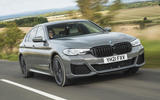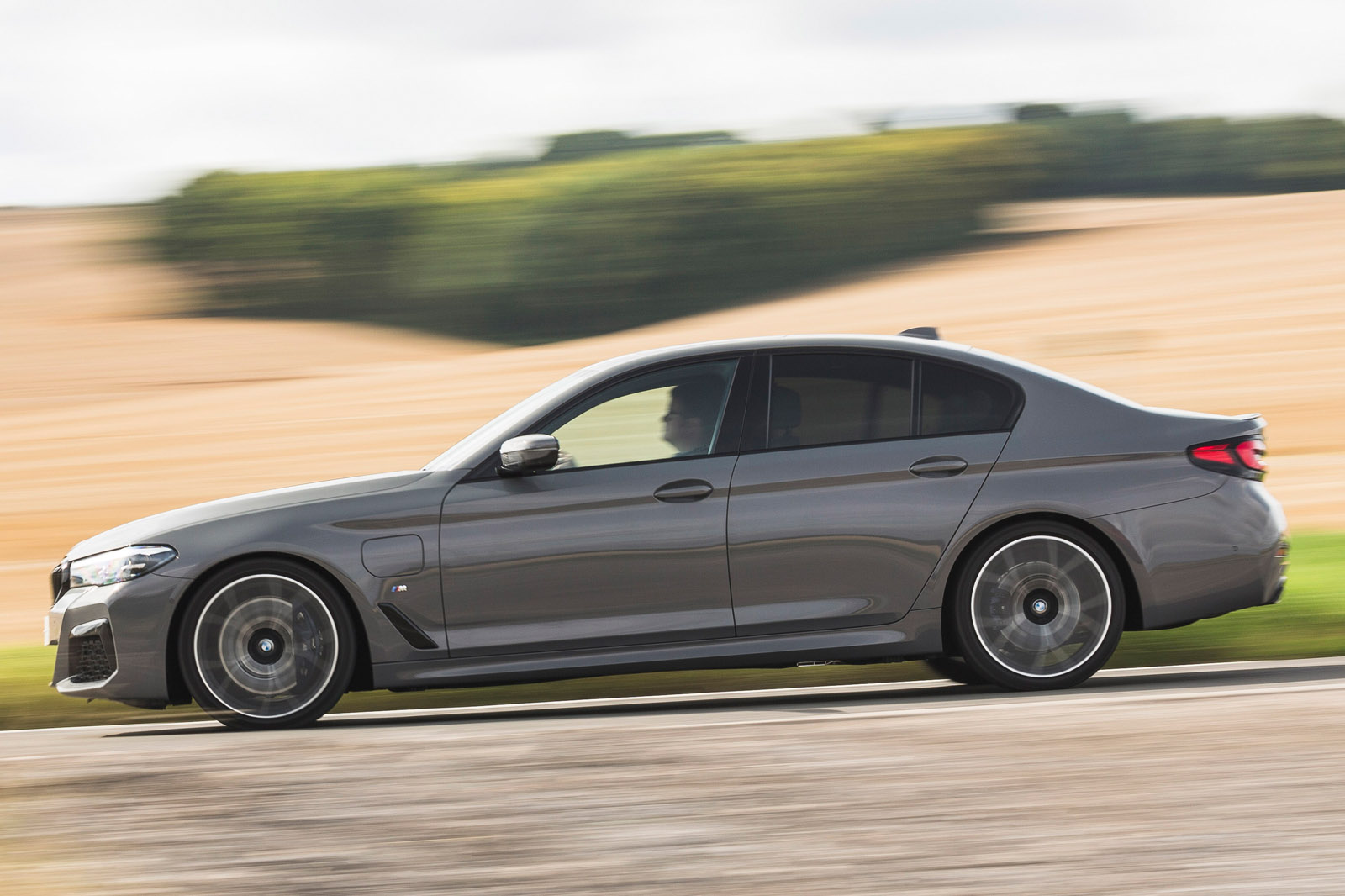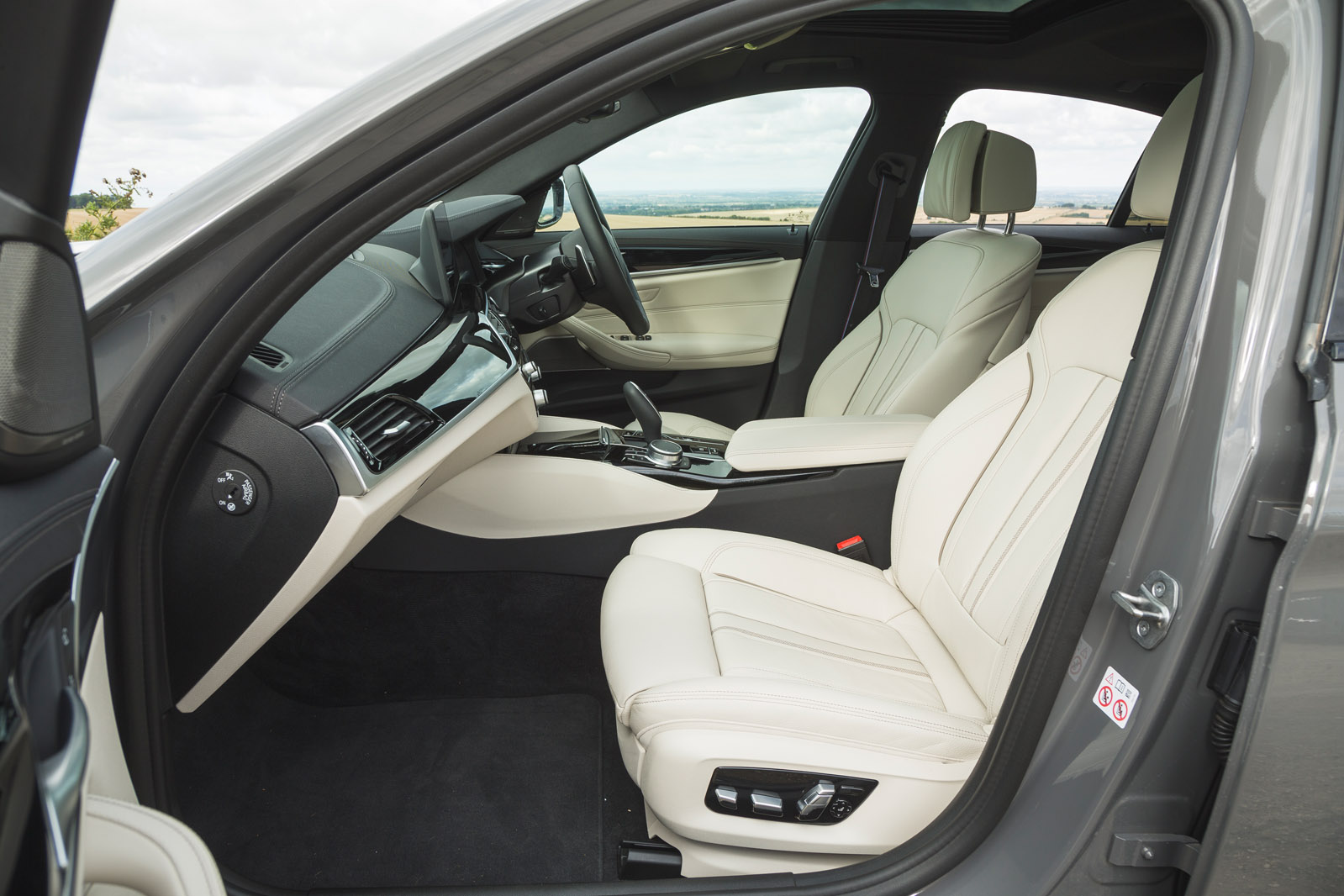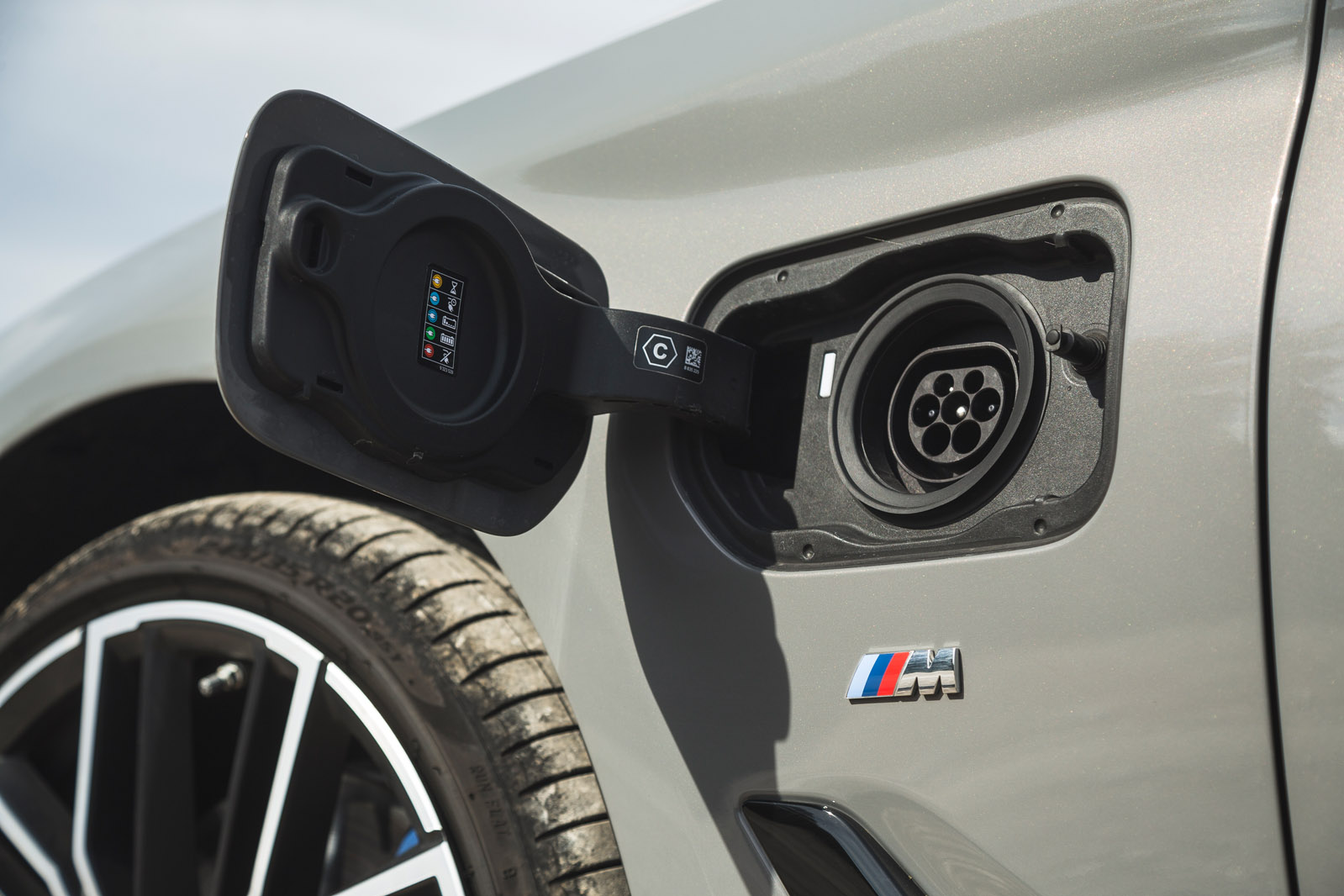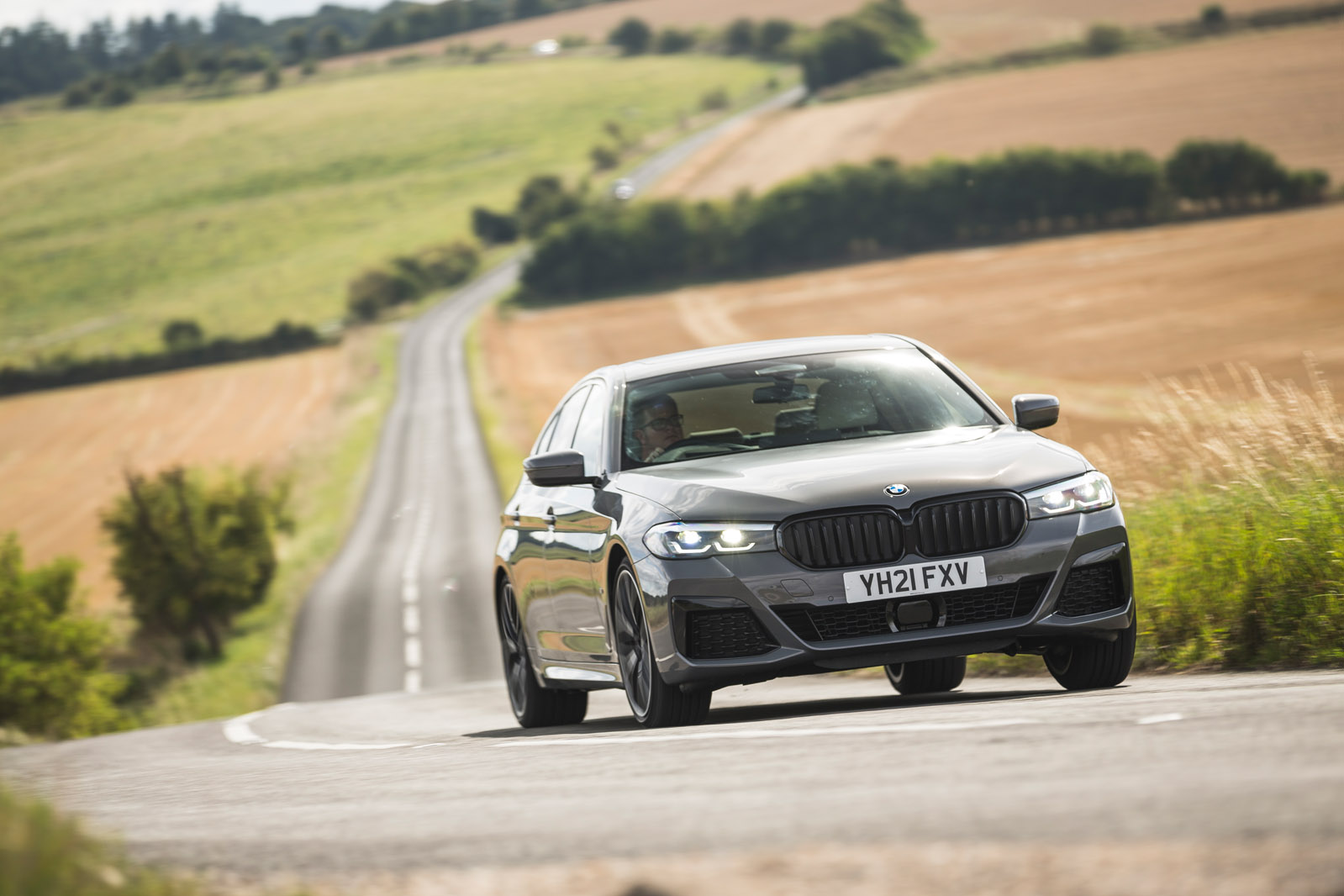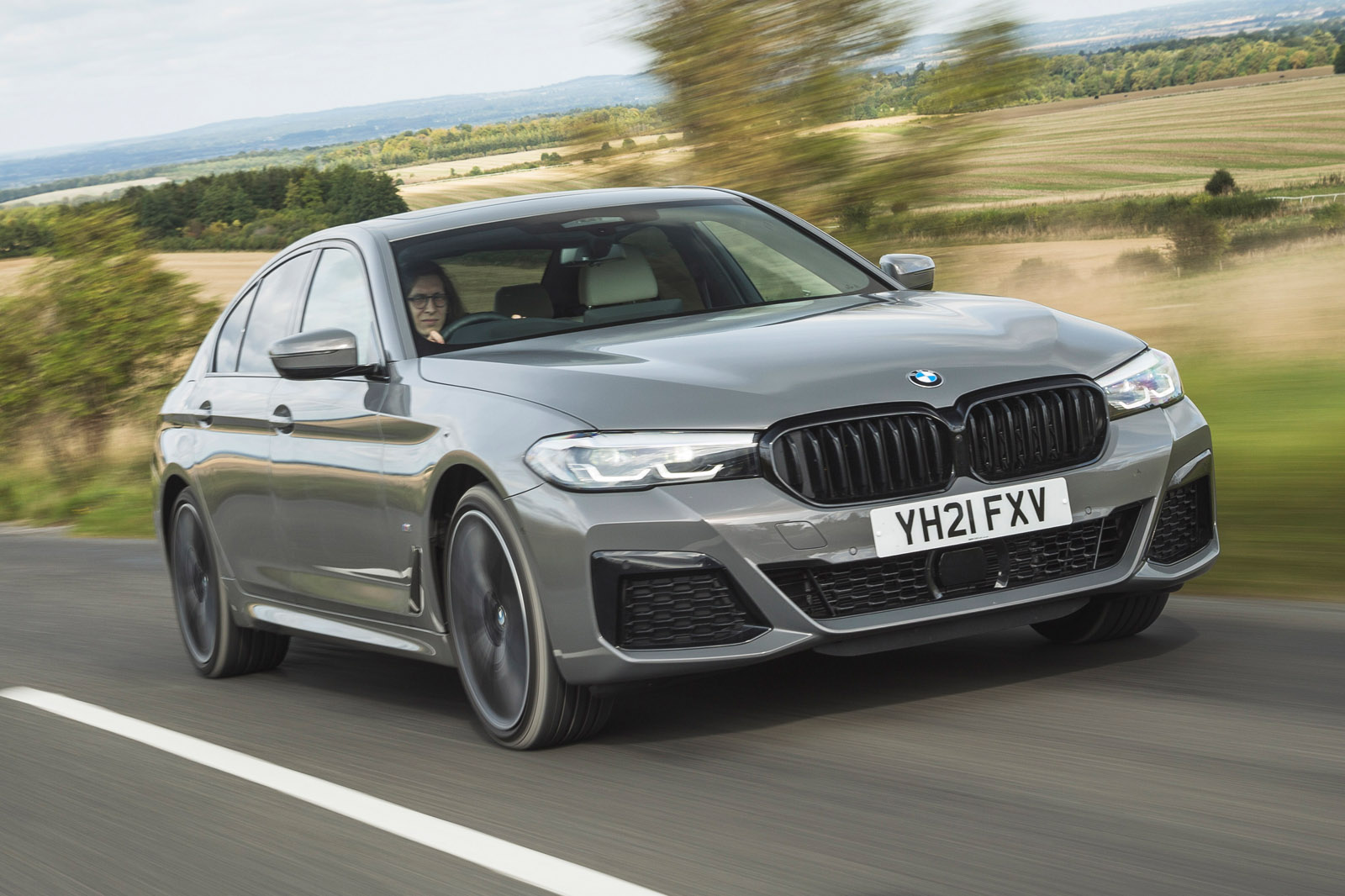It may very well already have happened – but if not, this could be the week that the BMW Group sells its millionth plug-in hybrid vehicle.
The firm has been anticipating breaking through that barrier since August 2020, when it announced three new PHEV model derivatives for the 5 Series range. As a result of those additions, the popular 530e can now be had in both saloon and Touring estate bodystyles, and in both rear- and four-wheel-drive mechanical configurations. But there is also the subject of this week’s road test to tempt you to lump a little more on your electrified executive saloon: the six-cylinder 545e.
With this car, BMW completes a circle it began drawing just over a decade ago with its very first petrol-electric 5 Series: the F10-generation ActiveHybrid 5. That car combined a turbocharged straight-six petrol engine with an electric motor, but back in 2011 that electric motor could develop only about half the power of the 545e’s equivalent component and it drew current from a battery pack a fraction the size of the one in our test subject. Electric range was a claimed two and a half miles.
The ActiveHybrid 5 was a water-testing exercise – and it proved warm enough that, over the next decade, BMW turned to four-cylinder petrol-electric power for its first serious waves of 30e-badged 3 and 5 Series PHEVs. Now the firm is returning to the idea of a silken straight six working in league with a torque-rich electric drive motor to add greater energy, dynamism and desirability to its electrified 5 Series range.





























